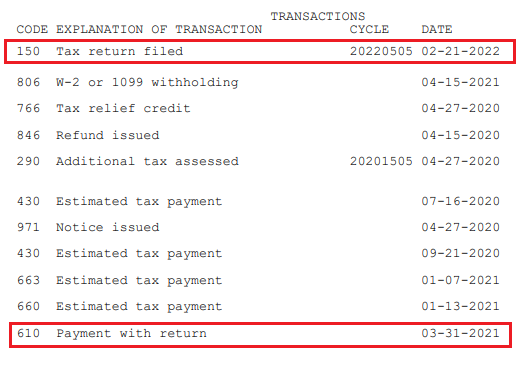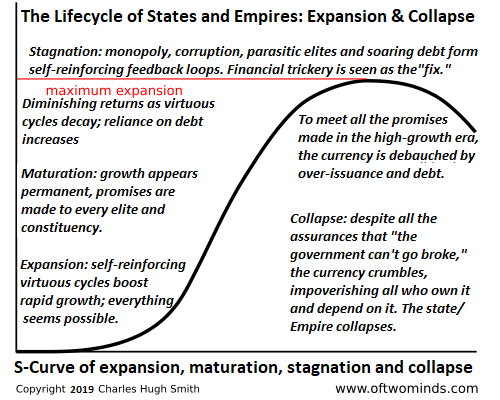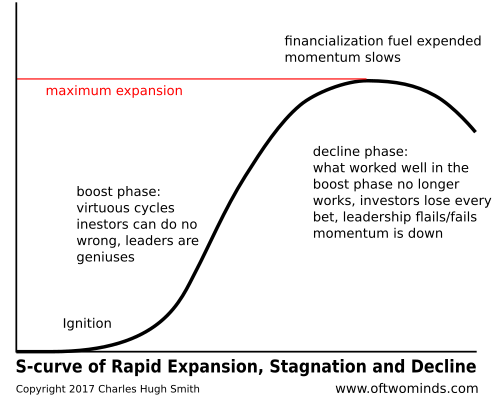When nobody cares that systems have broken down and there is no will or interest in fixing essential systems, there is no happy ending. Who fixes systems when they break down? The answer appears to be: nobody. Here are three everyday examples from my own life, breakdowns which may be random and rare but which the odds suggest are systemic. Let’s assume I’m not an unlucky one in a million but just another recipient of systemic breakdown. 1. U.S. Mail forwarding six month late. Millions of Americans move every year, and the US Postal Service, like other large-scale systems serving the public, has a system that automates change of address forms online. My previous experience is that mail forwarding might be a week or two late but it’s been reliable. In 2021–not so
Topics:
Charles Hugh Smith considers the following as important: 5) Global Macro, 5.) Charles Hugh Smith, Featured, newsletter
This could be interesting, too:
RIA Team writes The Importance of Emergency Funds in Retirement Planning
Nachrichten Ticker - www.finanzen.ch writes Gesetzesvorschlag in Arizona: Wird Bitcoin bald zur Staatsreserve?
Nachrichten Ticker - www.finanzen.ch writes So bewegen sich Bitcoin & Co. heute
Nachrichten Ticker - www.finanzen.ch writes Aktueller Marktbericht zu Bitcoin & Co.
When nobody cares that systems have broken down and there is no will or interest in fixing essential systems, there is no happy ending.
Who fixes systems when they break down? The answer appears to be: nobody. Here are three everyday examples from my own life, breakdowns which may be random and rare but which the odds suggest are systemic. Let’s assume I’m not an unlucky one in a million but just another recipient of systemic breakdown.
1. U.S. Mail forwarding six month late. Millions of Americans move every year, and the US Postal Service, like other large-scale systems serving the public, has a system that automates change of address forms online. My previous experience is that mail forwarding might be a week or two late but it’s been reliable.
In 2021–not so much. We left a car in storage in California in the Covid lockdown and family obligations made it necessary to deal with it at a later date. It’s old and not worth much, and since we’d filed a Planned Non-Operation registration with the DMV, the registration fee was $23 a year.
If I’d anticipated USPS mail forwarding to completely break down, I would have signed up online for CA-DMV email notices, but I assumed mail forwarding was functional. Alas, we received our 2021 auto registration notices sent in May 2021 in late November–long after the renewal deadline in early June. The mail wasn’t a week or two late, it was six months late. That’s a breakdown.
That’s when the breakdown of California DMV’s system revealed itself rather ingloriously.
2. Your non-operational car in storage must be insured and pass a smog certification test. I’ve noticed many local government agencies are no longer satisfied to simply charge a late fee for tardy payment–their responses are designed to punish the tardy public far beyond the “sin” of missing a deadline for payment/filing a form.
The California DMV strips away the option to register a car as non-operational once you’re 90 days late in registering the vehicle. This doesn’t mean your non-operational car magically becomes operational and can be driven to a smog certification station. It just means you have entered DMV No-Exit Purgatory: your car can’t be smog certified, therefore it can’t be registered, and so it drops completely out of the DMV online system.
Not only is the car non-operational, we weren’t there to deal with it. California has tens of millions of residents (around 39 million) and millions of registered vehicles. 675,000 people moved out of California in 2021 and some percentage probably left cars in storage, what with the 2020 Covid travel restrictions and other issues.
I find it difficult to believe I am the only individual who missed the deadline to register my non-operational vehicle as non-operational, but the DMV has no system response other than demanding a $214 late fee (heh) and that you register the vehicle as operational.
Trying to get the DMV to acknowledge a DMV change of address form is an epic in itself. Submit a paper form or an online form, neither one can be relied on.
Sending correspondence to the DMV asking for help in fixing this problem is like sending letters to the dead-letter dumpster. Some DMV staffer decided to get my case off their desk by arbitrarily declaring the car had been “registered in another state.” This led to the absurdity of the DMV demanding a document from the Hawaii DMV proving the car which I’d repeated stated was non-operational in California storage hadn’t been transported to Hawaii. In other words, it became my job to fix the absurd errors of DMV staff.
When the public has to go through endless hoops to fix problems created solely by the public agency itself, this is a Kafkaesque breakdown in “public service.”
I finally located an online DMV portal which accelerated the 7-month back-and-forth-going-nowhere to a week of endless emails and submittals of documents. (Could the DMV have pointed me to this portal in the previous 7 months? One would think so, but the answer is “apparently not.”)
After 7+ months of completely needless churn– a waste of my time and the time of DMV staffers–the DMV decided to issue us a non-operational registration for the non-operational car.
| What difference does it make to the DMV if the non-operational car in storage is registered 91 days late, or 209 days late? As long as the outrageous late fee is paid, what benefit to the public interest is served by creating a no-exit Purgatory where the owner can neither register the non-operational car as non-operational or get the car running and get the smog certification? None. The DMV just wasted its own staff on a completely useless 7+-month travesty of a mockery of a sham of “public service.”
3. We cashed the tax payment attached to your 2021 tax return but you didn’t submit a 2021 tax return.I’ve tried everything to reach the IRS (Internal Revenue Service) and solve problems not of my own making, but nothing has worked. I’ve waited patiently on the phone, and found the staff courteous and trying to be helpful, but unable to get the problem resolved. I’ve gone to the local office and been told, we can’t handle that, contact the regional office. The first fiasco was trying to register online to pay my taxes. One would imagine the IRS would make every effort to to make paying your taxes easy, but this wasn’t my experience. For reasons beyond my feeble grasp, the IRS recommended I open an EFTPS tax payment account. This proved impossible, for a reason which only became clear after repeated failures–a reason which the courteous IRS staff apparently couldn’t see on their screens: The IRS online system only recognizes my 2016 tax year. Entering data from 2017, 2018, 2019 or 2020 shunted me into a “the data you provided does not match our records” dead-end. No explanations or help were offered. If only the IRS phone staff had been able to tell me, “just enter the data from your 2016 tax return,” a huge amount of completely useless churn could have been avoided. The second fiasco was submitting my 2020 tax return in March, 2021 and receiving multiple letters from the IRS stating they hadn’t received my 2020 tax return. I sent a letter to the IRS in September 2021 asking if they wanted me to resubmit my 2020 tax return. I then received three form letters over the next 4 months stating that “we’re looking at the issue and need more time.” I finally wised up and logged into my IRS account, which enables taxpayers to download transcripts of their tax records. Here’s the transcript of my tax payments and IRS actions: |
Note it says “payment with return, March 31, 2021,” meaning the IRS received my 2020 return and the payment attached to the return in in late March 2021, and the payment attached to my tax return was deposited on March 31, 2021. (A whopping $668.)
So if I can see this transcript proving my 2020 tax return and payment were received in late March 2021, then why couldn’t the IRS staff see this same information? It boggles the mind: there’s the data, for everyone in the IRS to see, but instead a completely needless, pointless churn of correspondence wasted everyone’s time and effort.
Next, note that my 2020 tax return was finally processed on February 21, 2022. Meanwhile, through all this this 6 months of utterly useless churn, I was also trying to get the IRS to change my address. I submitted official IRS change of address forms to little effect. Finally, in March 2022, I received a letter from the IRS confirming my change of address and 2020 tax return had been processed. Whew.
It took a year to get it sorted. That’s a breakdown.
What’s the takeaway from these three experiences? For me, the takeaways are:
1. Systems that were reliable are no longer reliable.
2. The breakdowns are incredibly difficult to fix within the system.
3. The fixes consume an enormous, completely unproductive amount of time and effort.
4. Digitizing records and automating online services hasn’t led to reliable, efficient systems optimized to solve problems.
5. Nobody in the system or in the political hierarchy has any interest in the deep overhaul required to actually restore these systems’ reliability, efficiency and ability to fix problems.
Who’s going to fix what’s broken? No one. When the systems we rely on–the postal service, the vehicle registration system, the tax payment system–no longer function reliably or effectively, where does that take us as a society? Where does that take the economy? When nobody cares that systems have broken down and there is no will or interest in fixing essential systems, there is no happy ending.
Tags: Featured,newsletter








